If you want to sell online courses from your own website, Shopify is a good way to go. The platform is easy to use and has powerful marketing features to promote your courses effectively. In this article, we’ll walk you through 2 methods you need to know about how to sell courses on Shopify, including:
Let’s dive right into the details of each step!
What to Prepare Before Selling Courses on Shopify?
Since failing to prepare is preparing to fail, before we show you how to sell an online course on Shopify, we’ve crafted a checklist for you to go through first.
1. Choose the main topic of your courses
Thanks to the borderless nature of the internet, selling online courses have been all the rage over the past few years. The online course market is crowded with courses covering all kinds of topics – from bakery to digital marketing, 3D modeling, and anything you can imagine.
So with such fierce competition, our advice is to choose a topic that ticks all these three boxes:
- Expertise: You have hands-on experience and industry insights in the field you plan to teach.
- Passion: You know you have passion when besides the monetary values of selling courses, you feel a strong calling to do what you’re going to.
- High-demand market: There are existing demands for the courses you’re about to teach.
-

Image Credit: Shopify
If it lacks any of the three mentioned factors, perhaps it’s not your ‘Mr.Right’ topic. From our experience:
- Without hands-on experience and industry expertise, your passion won’t get you any place, even in a high-demand market.
- Without passion, you’ll struggle to create engaging lessons – a key factor to keep learners coming back.
- And needless to say, without a high-demand market, your efforts just go in vain.
2. Carry out customer research
Before selling courses on Shopify, ensure you understand your target audience’s needs, interests, and pain points to tailor your Shopify classes to their specific requirements.
Here are some proven-working tools and tips we’ve compiled just for you:
- Start by researching your niche and the competition to see what courses are already available in your field.
- Use Google Trends to analyze keyword trends and search volumes in your industry. This will give you an idea of what people are searching for and what topics are popular.
- Use SEO tools like Ahrefs or SEMrush to analyze your competition and their traffic sources, backlink strategies, etc.
- Conduct surveys or interviews with your target audience to understand their pain points and what they want in a course.
- Engage with your audience on social media and forums like Facebook, Quora, Reddit, etc., to better understand their needs.
For instance, by using Google Trends, I found that people prefer learning the general ‘digital marketing course’ more than the specific ‘performance marketing course’.
Remember, customer research is not just about gathering data, it’s about understanding the people behind the numbers. So, take the time to listen to your audience and get to know them personally.
3. Plan your course outline
After carefully choosing your topic and doing thorough market research, the next thing to do is plan your courses’ outlines.
Your course outlines should include the following criteria:
- A clear course name and catchy description
- Learning objectives (after taking my course on ABC, you’ll achieve XYZ)
- Learning activities for each module (a quiz, a fun game, etc.)
- Optional and further material
- Homework and final exams (to give learners certificate of completion)
- Live sessions (if any)
4. Choose your course format
From detailed course outlines, you should choose to offer your course format accordingly. As far as we’re concerned, here are the top four most popular course formats:
- Video content: this is the most popular course format. HubSpot Academy or Shopify Academy provides their courses under this format dominantly.
- Screencasts and walkthroughs: if you’re giving courses to show your learners step-by-step processes (e.g.: Google ad optimization), don’t forget to leverage this format.
- Text content: besides videos, you can use text for transcripts or explain a concept in more detail and link to other helpful resources.
- Downloadable content: give your learners a cheat sheet or a PDF summarizing your lessons.
If you want some inspiration, you can check out some free courses on HubSpot Academy.
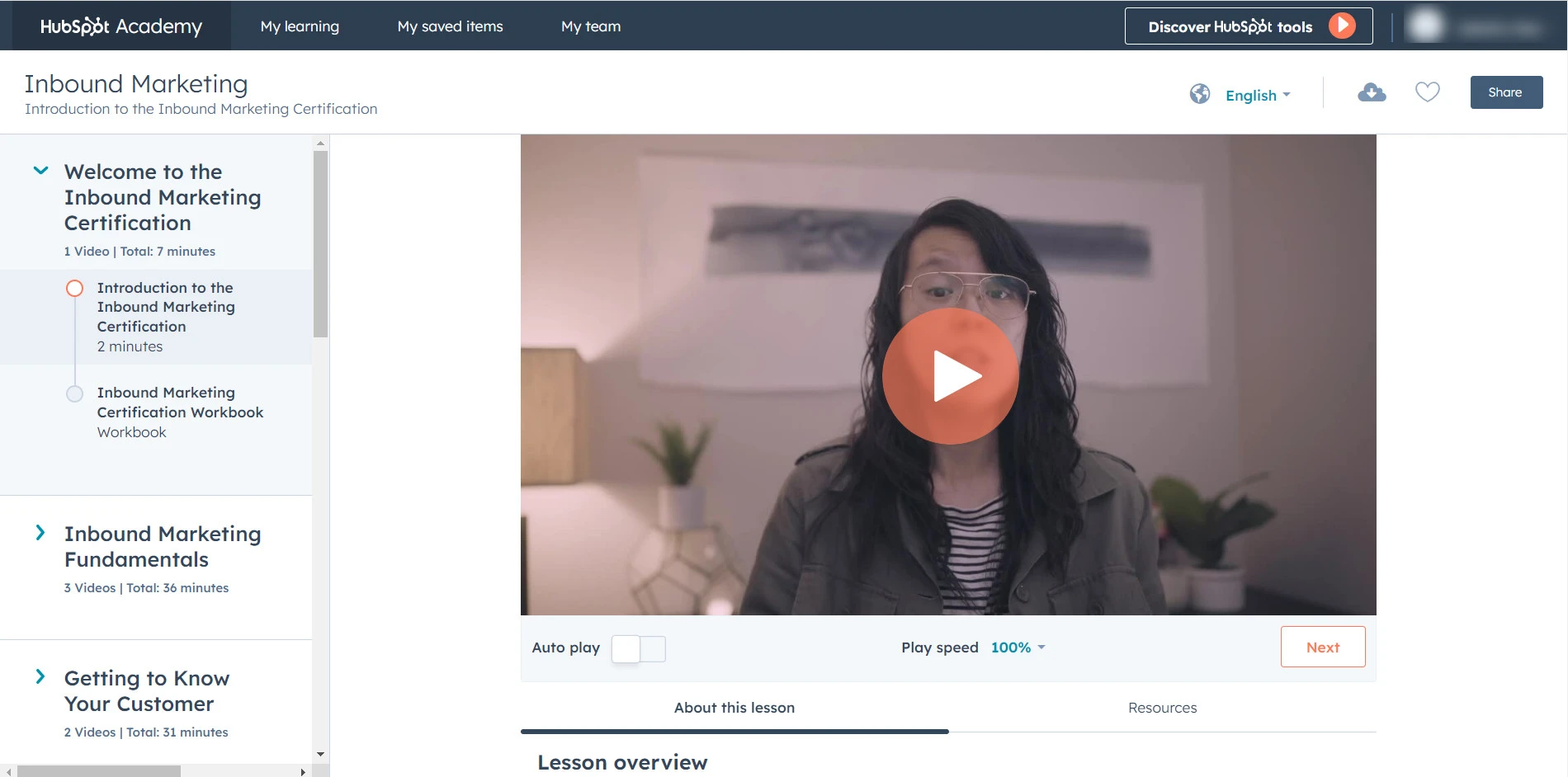
How to Sell Courses on Shopify?
Now that you know what you want to ‘teach’ and the formats to deliver your lessons, here comes the main question: “How to sell online courses on Shopify?”
There are two primary methods to sell courses on Shopify:
- Sell your courses under restricted access
- Use a learning management system software.
Well, no matter which method you choose, you need to create a Shopify account to host your website in case you haven’t had one. As of writing this article, Shopify has a free trial promotion – you get to use Shopify at $1/month for the first three months on a select plan.
#Method 1: Sell your courses under restricted access
The first method is selling online courses on Shopify under a password-protect page. And only the customers with the given password can access your course’s content.
You can create pages or blog posts, as they both contain video, images, and audio files.
Ensure your image, video, and audio files are high quality and mobile-responsive, so your learners can have the best learning experience on any device.
-
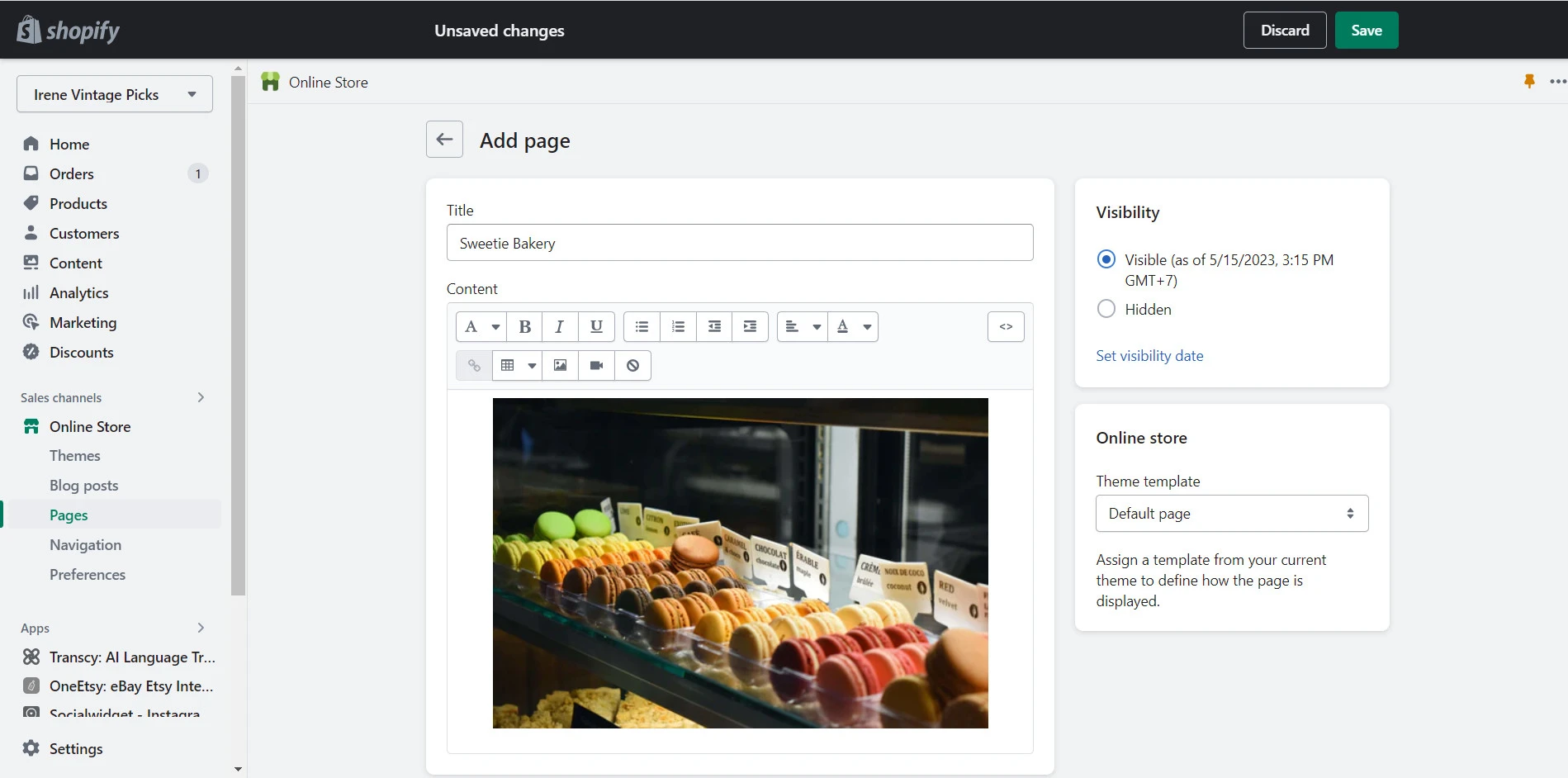
You can add a page and upload all your course materials onto it
Afterward, you can sell customers’ memberships to access your courses. However, Shopify doesn’t support password-protecting specific pages, so you have to use an app like B2B Login/Lock & Hide Price.
Though this method is easy, the customization of your course design, materials, and features is quite limited. Not to mention that you have to install a third-party app to password-protect your course pages.
Therefore, it’s not the option we highly recommend. Instead, you can try the second method: using a learning management system provider.
#Method 2: Connect your store to an LMS provider
Though you can use a Shopify courses app to create and sell courses on Shopify, we’ve tested them all, and they’re inconvenient. They all lack the features you need to create a well-designed course.
So in this method, we’d recommend using LearnWords – a fantastic LMS platform to create your course and choose Shopify as your payment processor.
Step 1: Create your LearnWords account
On the LearnWords homepage, click Get Started Free > fill in your email and course domain > click Start your 30-day free trial now.
Follow LearnWorlds’ onboard prompts to finish your basic setup. Afterward, click Finish.
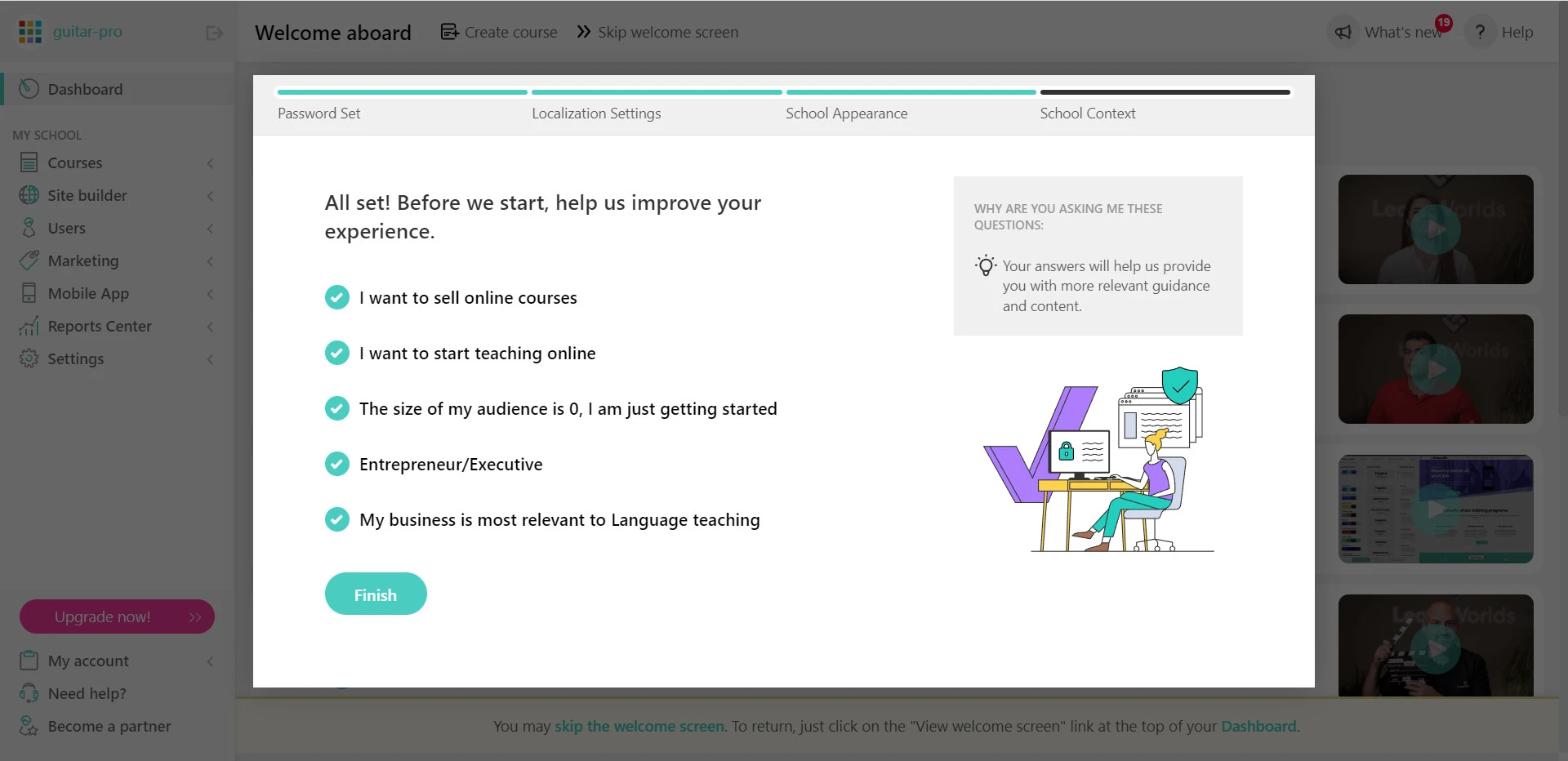
Now click + Create Course button on your LearnWorlds admin dashboard to start creating your first course.
Step 2: Create and customize your course
After finishing the onboard flow, click + Create Course button on the top left corner.
-
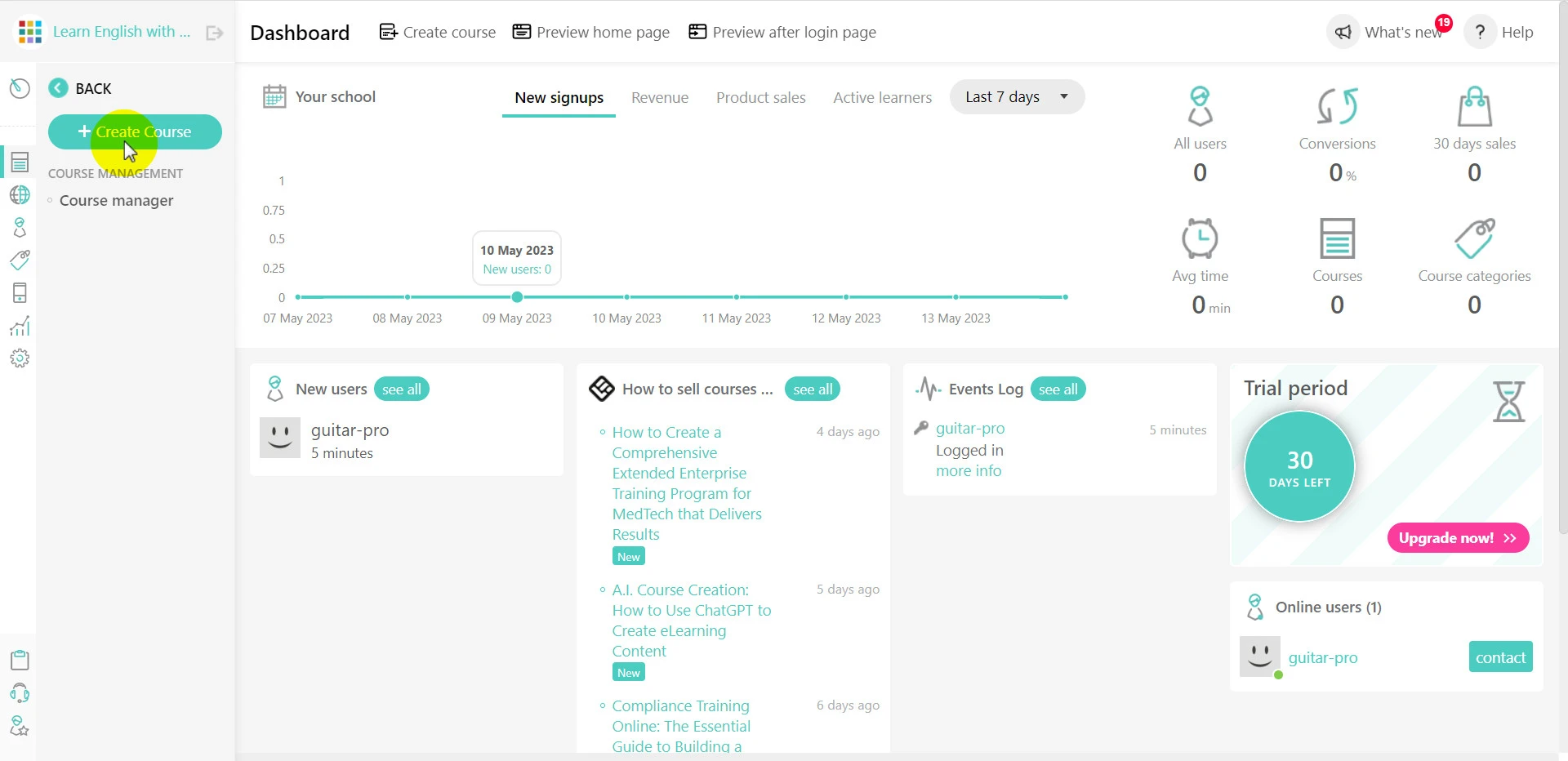
Click +Create Course
Give your course a title and a URL > Click Next.
-
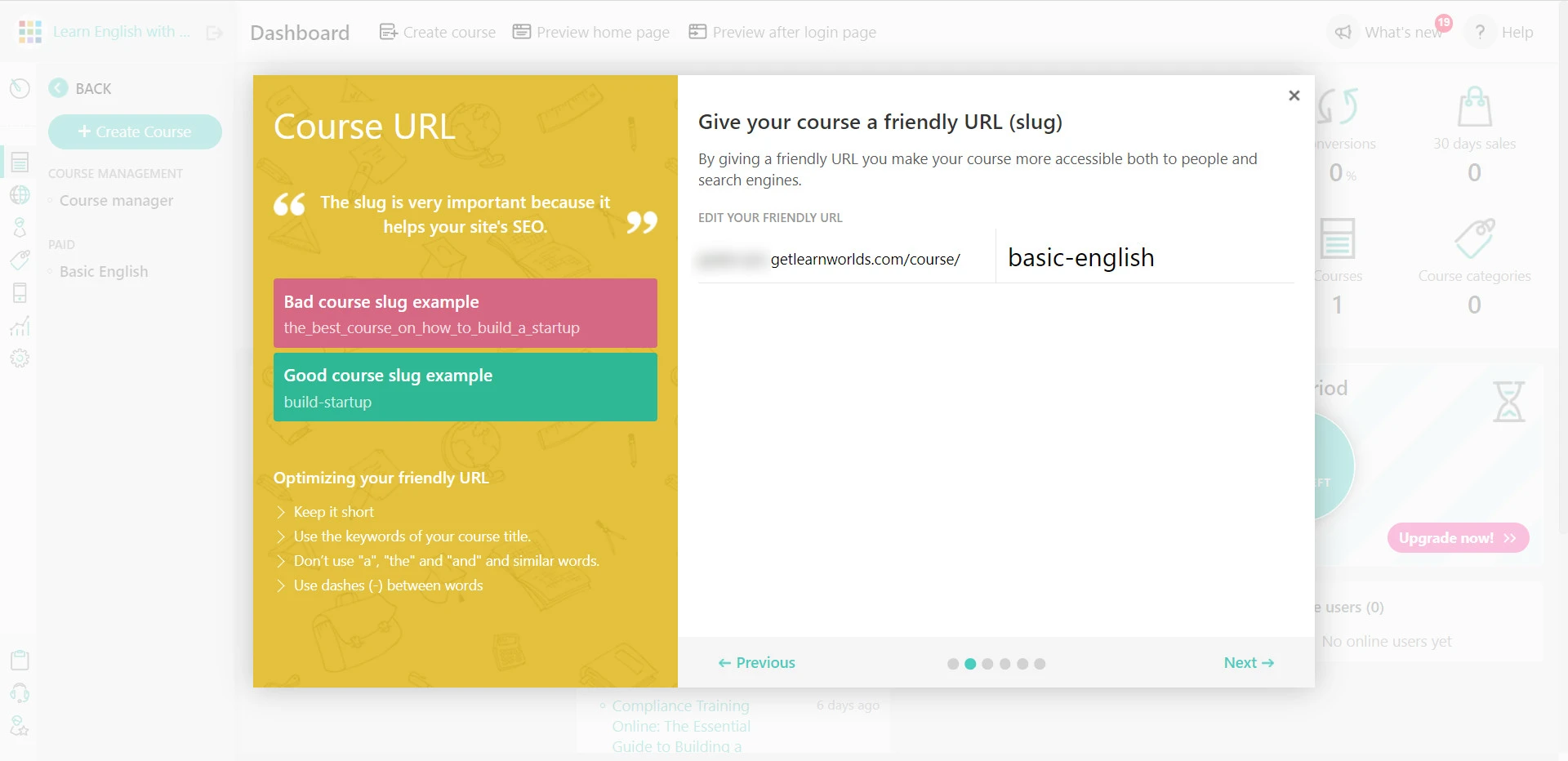
Name your course title and URL
Select your course pricing by clicking Paid.
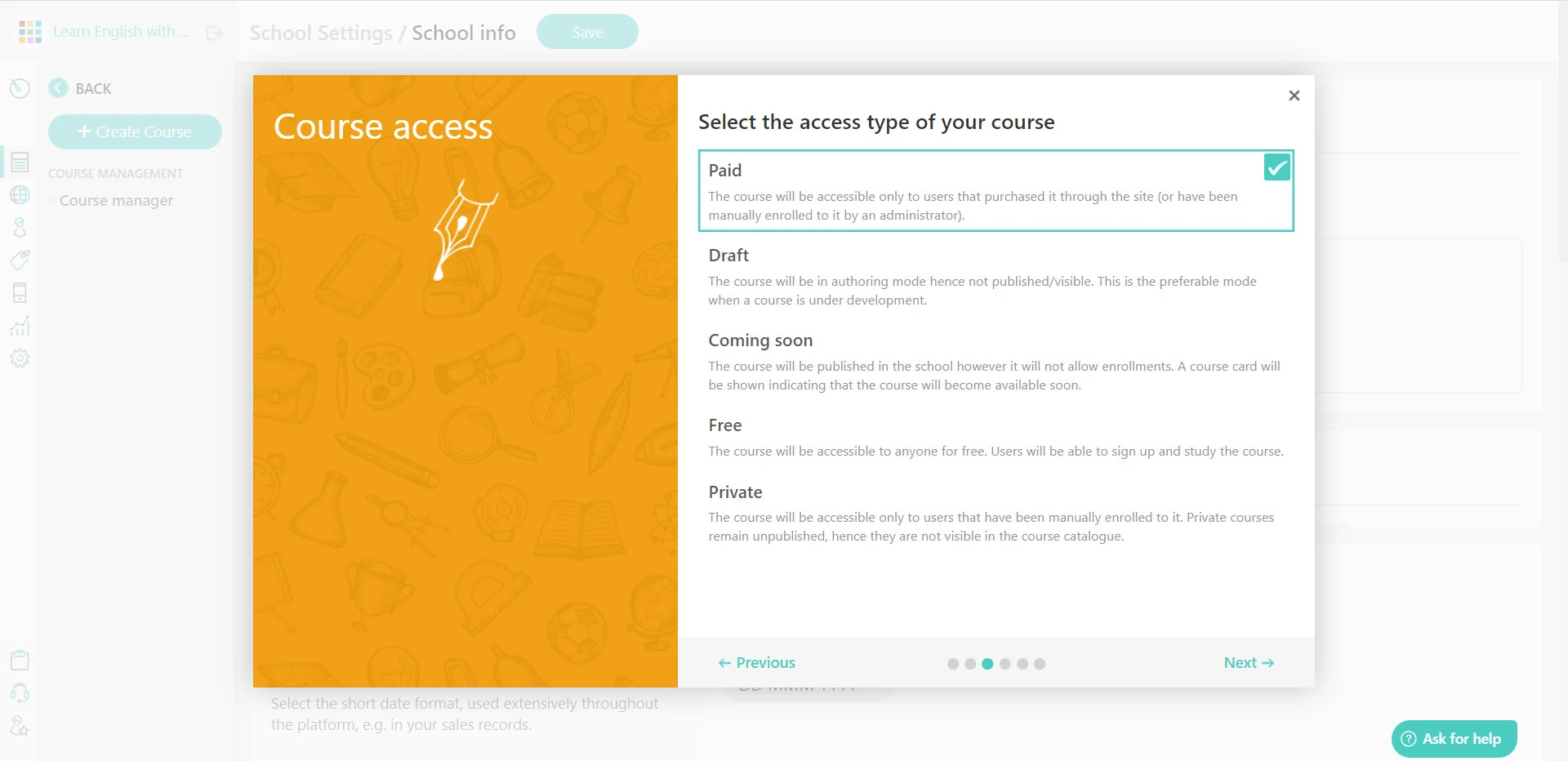
Then price your course. Though an overpriced course won’t sell well, don’t underprice your course either since this might hurt your profit margin.
-
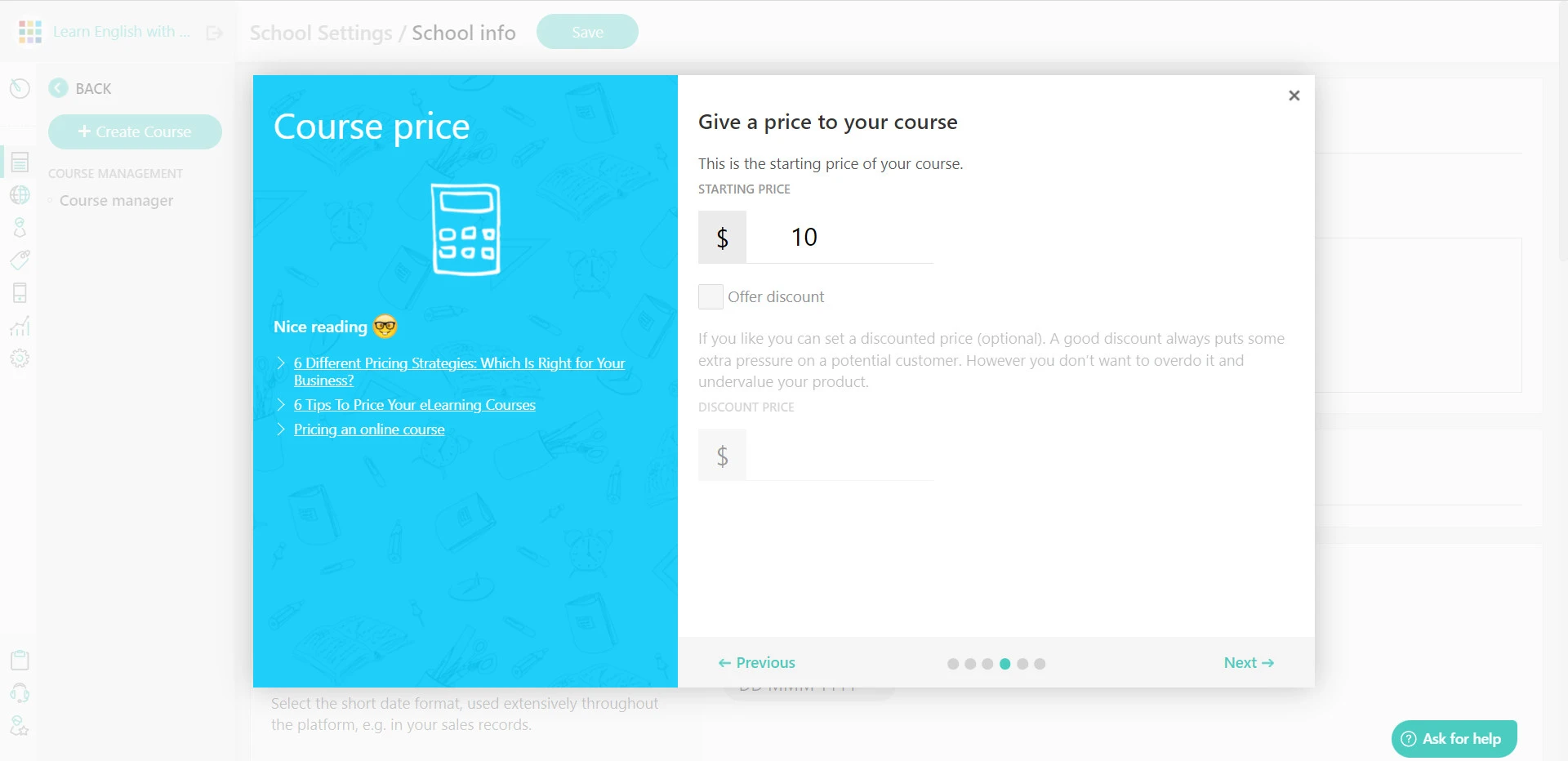
If you decide not to offer your course for free, let’s price it
Afterward, customize your course card by uploading an image and providing your course description > Hit Next, and you’re done.

To customize your course, on the Courses section, navigate to the course you’ve just created. Herein, you can fully design and customize your courses’ modules, activities, and many more.

Depending on your topic, audience, and nature of the course, the customizations will vary significantly, and it’d be better for you to try and see for yourself. So we won’t dig down further at this step.
Instead, we’ll show you how to choose Shopify as your payment gateway and sync your courses to Shopify next.
Step 3: Choose Shopify as your payment gateway and sync your courses
On your LearnWorlds admin dashboard, click Settings > Hit Financial > Choose Payment Gateway.
Next, pick Shopify as your payment gateway and type in your Shopify store URL. Afterward, copy the Admin’s Access token in your Shopify store, paste it into the Shopify admin API access token field, and hit Save.
-
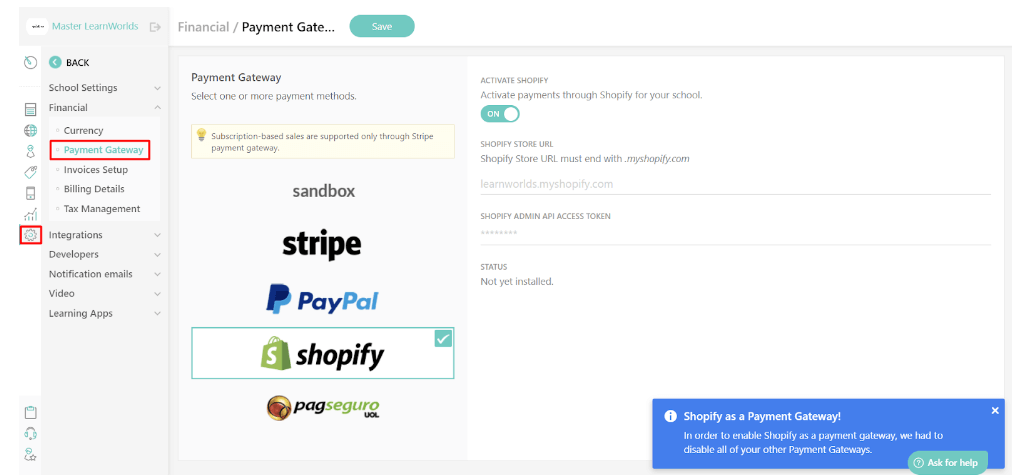
Choose Shopify as your payment option (Image Credit: LearnWorlds)
Then, a new button, as shown below, will appear to let you sync your courses to Shopify; click Sync. After the synchronization process completes, your courses are synced to Shopify.
-
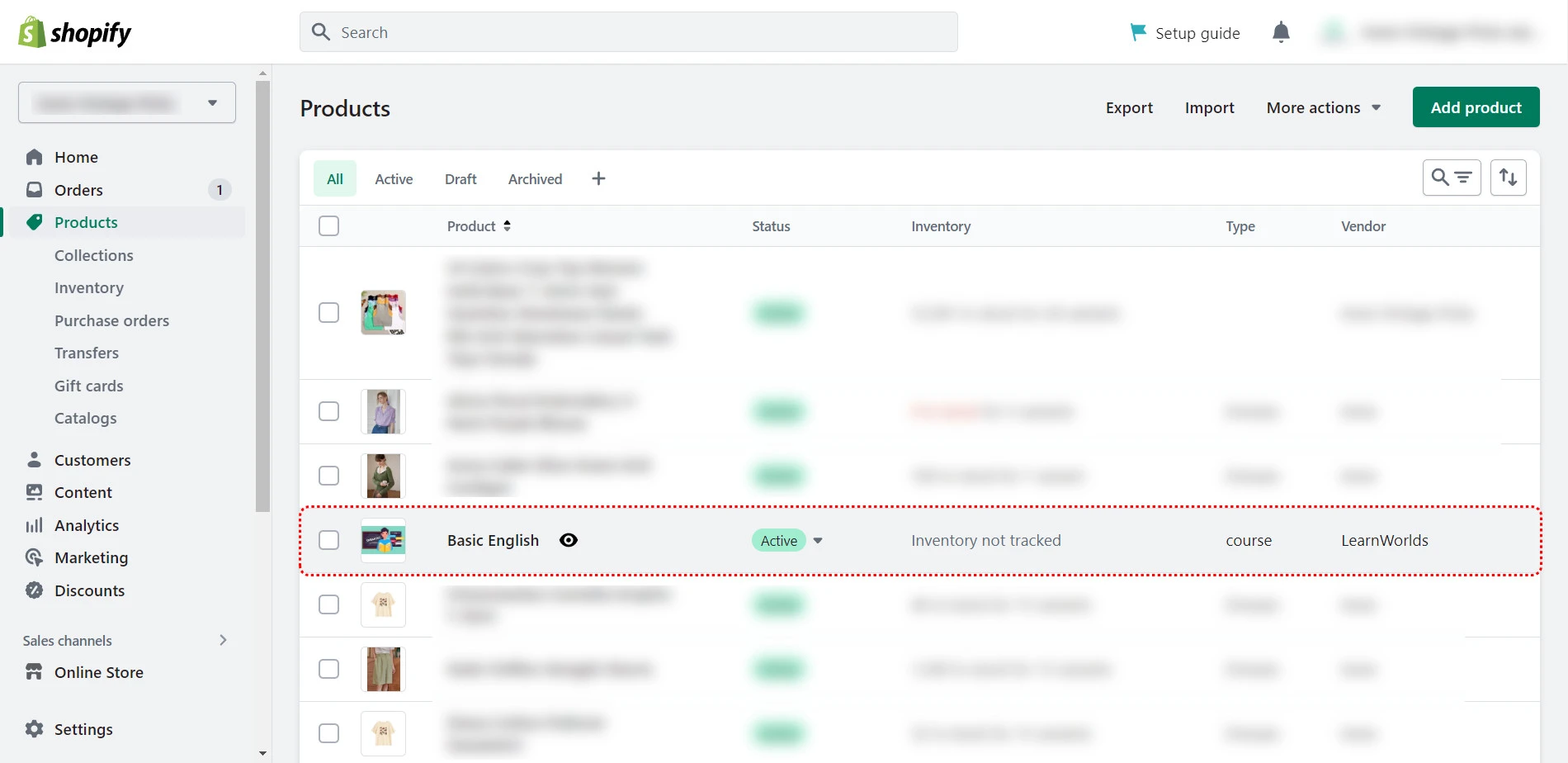
Your courses will be synced to Shopify under the Products section
Click on the course to customize your Shopify product page.
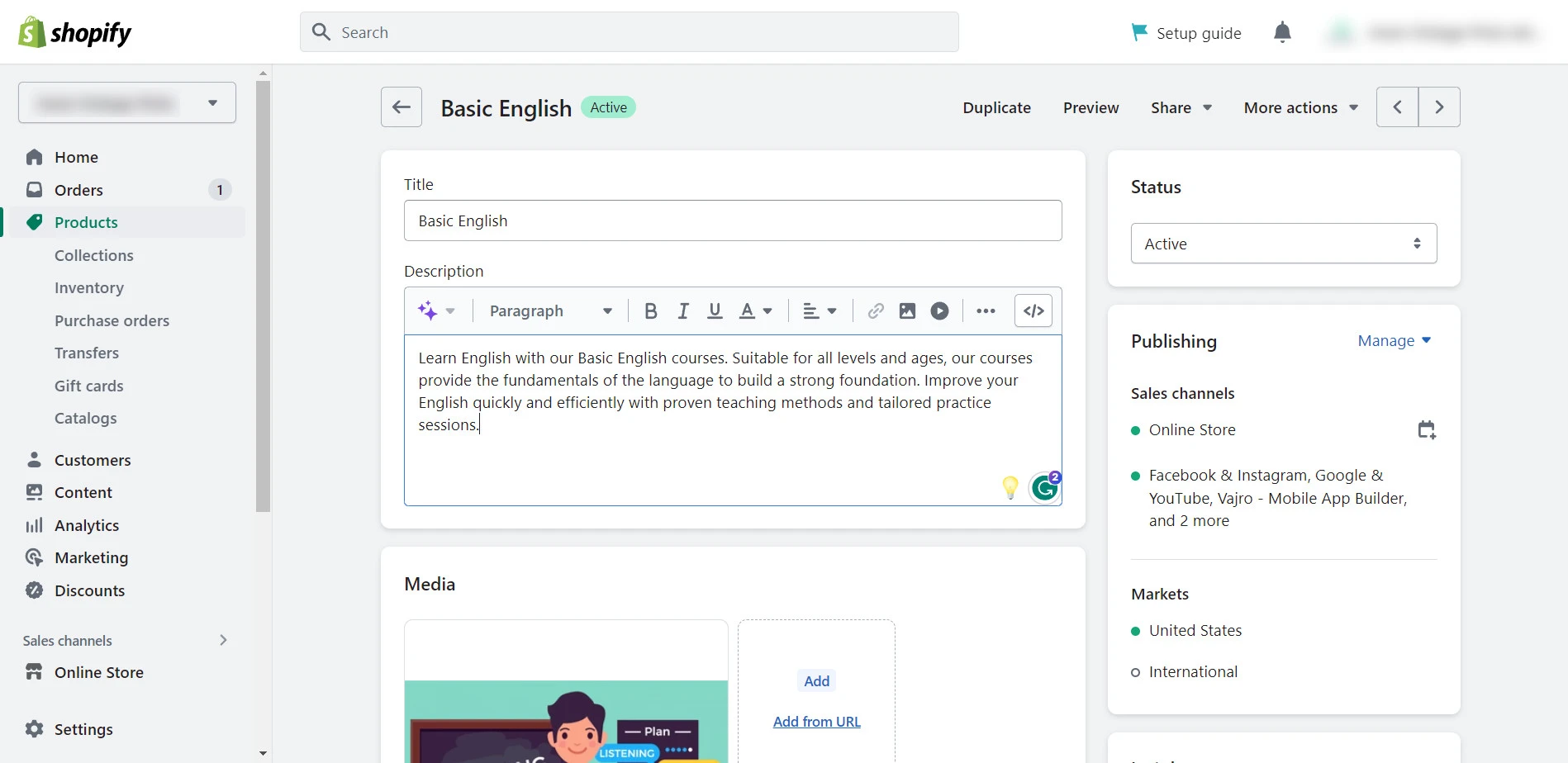
Don’t forget to preview your course page to ensure everything goes according to plan.
-

Sell courses on Shopify- Preview your course before publishing it
And when a customer buys your course, they will be brought to your Shopify checkout page with the course in their cart. When they check out, they will be directed to LearnWorlds to start their course.
And that’s how you can sell courses on Shopify via LMS!
How to Promote Courses on Shopify?
After creating your Shopify courses successfully, you need to promote your courses in order to attract your first learners.
Here are some strategies to promote and sell courses on Shopify:
- Engaging Content Creation: Craft valuable and engaging content related to your courses, such as blog posts, videos, and social media posts.
For instance, create a blog series on “Top 10 Tips for Mastering [Course Topic]” and share it across your channels. - Social Media Marketing: Leverage social media platforms like Facebook, Instagram, and Twitter to reach a wider audience. Run targeted ads, share course updates, and engage with your followers through contests or Q&A sessions.
- Email Marketing: Build an email list of interested individuals and regularly send them newsletters or updates about your courses. Offer exclusive discounts or free resources to incentivize sign-ups. Send personalized emails with tailored content recommendations to nurture your subscribers.
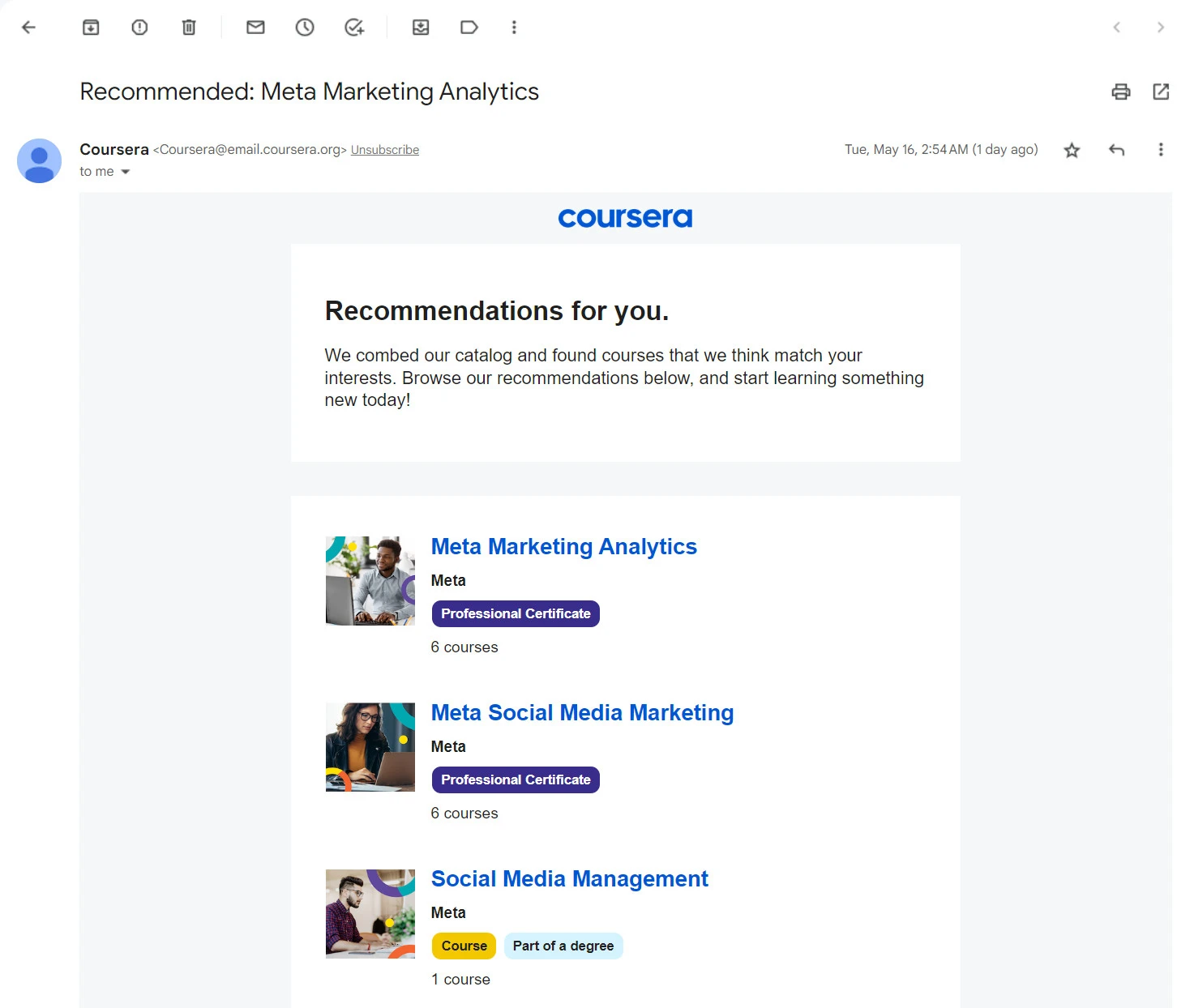
For instance, you can leverage email marketing to send your customers the courses they’re most likely to be interested in - Influencer Collaborations: Collaborate with influencers or experts in your course’s niche to promote your offerings. They can create sponsored content, share their experience with your course, or even host a webinar featuring your expertise.
- Customer Testimonials: Encourage satisfied customers to provide testimonials about their experience with your course. Display these testimonials on your website or social media platforms to build trust and credibility.
- Affiliate Marketing: Create an affiliate program where individuals or influencers earn a commission for promoting and driving sales for your courses. Provide them with unique referral links and offer attractive commission rates to motivate them.
Combining these strategies and tailoring them to your audience’s preferences can significantly boost your course promotion efforts. Stay consistent, engage with your audience, and provide valuable content to establish yourself as an authority in your field.
Selling Courses on Shopify – FAQs
[sp_easyaccordion id=”58923″]
Conclusion
In brief, if you’re looking for some brilliant ideas for selling online with Shopify, you should definitely consider selling courses on the platform. And LitExtension – #1 Shopping Cart Migration Expert hopes after reading this article, you can know how to sell courses on Shopify properly.
For more insider eCommerce news, tips, and tricks, check out LitExtension’s blog site and Facebook Community.